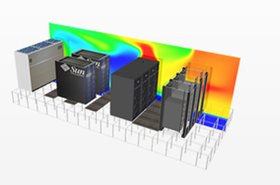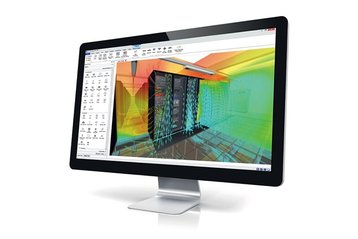Demand for data centers in Europe is only going to intensify. In fact, European data center revenues are forecast to increase by approximately 46 per cent by 2025, according to the European Data Center Market Report. Following a couple of years dominated by a series of successive lockdowns, this news should not come as a surprise. After all, we have become accustomed to a life of digital on-demand. From home-based working and education, to the rise of widespread digital content consumption and omni-channel ecommerce – new digital mandates have positioned data centers at the core of this data-driven environment.
Advantages of deploying data center monitoring systems
Within this context, providers are scaling and strengthening their operations, and are deploying data center monitoring software to improve performance efficiency. Data center monitoring achieves this by offering facilities management and IT teams with visibility over the health of their equipment in real-time. Without this they would be limited in their ability to assess and monitor the condition of their equipment, as well as any critical problems either caused by human or mechanical error. Ultimately, this will lead to outages, lost revenue, and both decreased consumer and stakeholder satisfaction.
Gaps in data center monitoring
Against this backdrop, it is clear that monitoring offers tangible benefits. However, exclusive reliance on monitoring alone will still leave data center operators exposed to outages, poor performance, and commercial and reputational risk. As such, it is imperative that IT and facilities’ managers recognise and mitigate against the gaps in its capabilities.
For example, they should be aware that data center monitoring will not support them in future-proofing the facility. This is because sensors only have visibility into the current conditions of the data center, which cannot be accurately used to predict the future.
In addition, without predictive maintenance systems, monitoring solutions cannot predict mechanical deficiency. The tools will only inform data center managers on their existing environment; they cannot predict the impact of failure. Consequently, the only sure-fire way to monitor resilience without a virtual duplicate is to cause a worst-case failure scenario in your actual operational facility. Of course, this is not a feasible option for operators.
What’s more, monitoring solutions cannot observe everywhere as the sensors will only provide operators with insight into the specific position at which they are located, creating an incomplete and potentially misleading overview. For example, a single sensor positioned on top of a rack will not be able to accurately advise operators on the conditions of every piece of IT mounted inside.
Overcoming the challenges in monitoring
In order to bridge these gaps in data center monitoring, operators must fuse the tools that advise them on both the historical and current shape of their data center facility. Investing in Computational Fluid Dynamics (CFD) is central to this. CFD, the process of mathematically modelling a physical phenomenon by leveraging fluid flow and solving it numerically, empowers operators to accurately assess the environmental conditions anywhere they want, with meticulous detail.
Unlike monitoring, CFD also extends beyond temperature maps. It incorporates pressure, humidity, leaks, and air speed. Let’s look at airflow, as an example. Airflow can be predicted by CFD to show its movement through the center, providing operators with insight over the cause of thermal-related problems, mitigating risk and increasing operational efficiency. Moreover, whereas monitoring can alert operators to issues, it’s unable to offer the root cause of the problem. Conversely, CFD can simulate the pathway of air around a data center. It is therefore able to provide facilities’ managers with the reason why. This means that, moving forward, operators can simulate possible solutions to rectify the issue.
Another key advantage of CFD simulation is that it enables data center managers to simulate future resilience. In contrast to monitoring, an accurate CFD 3D representation will offer intelligence surrounding any configuration of a data center facility, including new ones that are yet to be deployed. For instance, those who implement this tool will have visibility over inlet temperatures of new servers, all within the simulated environment and prior to deployment. This encourages improved change management and, once again, further eliminates risk.
A dynamic duo
Data center monitoring and CFD are not competing technologies. Rather, they are symbiotic solutions which deliver critical insights that the other cannot. Blending the solutions together will offer IT and facilities’ managers with ultimate transparency into the health of their existing equipment, as well as the impact of upcoming deployments. And, given the world’s growing dependence on data, transparency is key to managing data center capacity, fresh deployments and changing customer demands.
More...
-

Digital twins and simulation in data center construction and operation
How a complete virtual copy of a data center can help organizations build more efficient and sustainable facilities
-

Sponsored Thésée: Design, operations and the digital twin
In Greek mythology, the secret to Theseus’s success was probably largely down to good genes, but in the absence of Godly parents, how has the Thésée data center followed suit?
-

Getting to know the digital twin
And how it can help data centers find solutions to downtime


